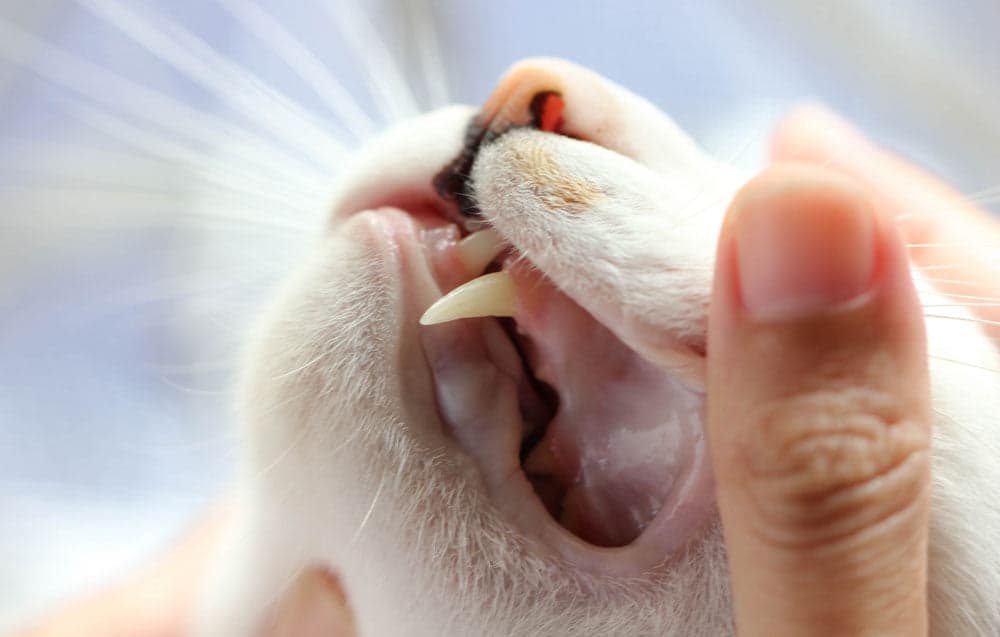Dental disease can be painful, expensive, and even life-threatening. Since cats don’t brush their teeth every day like we do, many of them will develop dental disease as early as when they are just 3 years old!
How does dental disease in cats develop?
There are over 400 different species of bacteria living in our cats’ mouths. Every few hours, especially after mealtime, remaining food particles in the mouth become digested by these bacteria and they start to form a layer on the tooth called a biofilm. Regular brushing helps to remove this biofilm. Since our pets do not brush their teeth every day, the biofilm hardens on top of their teeth and is called plaque.
Plaque can form within 24 hours without teeth brushing, which hardens, even more, to form tartar (also known as calculus) in as little as 3 days. This can also affect gums, and cause gingivitis. Gingivitis can be reversible with professional descaling, polishing and subsequent home care. If left untreated, the gums become detached from the tooth, forming ‘pockets’ which predispose to further plaque build up. This represents the first stages of periodontal disease. Over time, oral disease can spread these harmful bacteria to other parts of your cat’s body causing life-threatening heart, kidney and liver disease.
Top 10 signs and symptoms of dental disease in cats
We’ve put together this list of top 10 signs and symptoms of dental disease to watch out for so that you can prevent discomfort, pain and expensive vet bills:
Does your cat...
...have bad breath?
...have Brown or yellow teeth?
Is Dropping food when eating?
Is Losing weight?
Doesn’t like the mouth area being touched?
Is not grooming themselves?
Is eating from one side of the mouth?
...have missing or loose teeth?
..have red or bleeding gums or is drooling?
Chatter? Yawn excessively or grind their teeth? Or paw at their face?
Remember, cats are experts at hiding pain. So usually when they exhibit these common signs, the disease is advanced and needs medical attention. Any one or combination of these can be indicators of a visit to your veterinarian for a comprehensive oral health and treatment appointment.

What is a comprehensive oral health assessment as treatment (COHAT)?
During your cat’s comprehensive oral health assessment as treatment (COHAT) you and your veterinarian will review your pet’s history, diet chewing habits, and your current at-home dental routine. After a thorough physical examination and assessment of the problem areas, your veterinarian may need to take X-rays of your cat’s mouth to better understand the extent of your cat’s dental disease. While under anesthesia, the veterinary team will also scale and polish your cat’s teeth, extract any diseased teeth and treat them with local antibiotics. They will also recommend an at-home dental care routine, as well as diet and medications to keep your cat’s mouth as clean and healthy as possible.
What can I do to prevent dental disease in my cats?
The best way to remove the build-up of bad bacteria is to brush their teeth regularly. If brushing is challenging, here is a list of veterinary-approved treats and other products to incorporate into your cat’s care routine.
The good news is that most dental conditions are preventable and treatable, if caught early. That’s why we developed an early detection dental health test that analyses the microbes in your cat’s mouth (oral microbiome) looking for disease signatures before they become visible to the naked eye. With this knowledge in hand, you and your veterinarian are well on your way to stopping dental disease in its tracks.



